What is a compost toilet and how does it work?
What is a compost toilet?
A compost toilet is a waterless sanitation system designed to collect and manage human waste. Unlike traditional flush toilets, compost toilets do not require a plumbing connection to a sewage system, or water to operate, making them an eco-friendly and sustainable solution for waste management, especially in places where connecting to mains water and sewage is either expensive or impossible..
Understanding compost toilets:
a complete guide
Here at WooWoo Waterless Toilets, we sell several types of compost toilets and they all work in slightly different ways. Before we explore, let’s get an understanding of some of the basic terminology that will help explain the differences between them…

Our in-house compost toilet guru Martin, will help explain everything:
“All the toilets we sell are classed as waterless or dry toilets – this is just an umbrella term that covers any toilet that doesn’t use water. And just because it’s waterless, doesn’t mean it’s a compost or composting toilet – there are incinerating and freezing toilets too!
I’ve structured the explanations to highlight key distinctions and details, breaking them down into the following points:
Compost toilet or composting toilet: what’s the difference?
Although you’ll often hear people use the words ‘compost toilet’ and ‘composting toilet’ interchangeably, there is a subtle but important difference between them. Here’s a quick comparison:
- Compost Toilets:
These temporarily store waste, which is later composted in a separate area, away from the toilet. Popular models include Separett, Kazuba and Air Head toilets.
- Composting Toilets:
Composting toilets handle the entire decomposition process within the unit itself. Models like the Alectura or the WooWoo GT range make waste management easier since the final product is ready-to-use compost.
Compost toilet
A compost toilet is typically a collection unit/container that will temporarily hold the contents that are subsequently treated or composted away from the toilet, whereas a composting toilet actually does the composting within the toilet. Larger units will typically hold more so emptying will be less frequent.
A compost toilet is therefore half of a composting system (the other half being the compost bin or treatment system)
Some compost toilets, such as most models in the Separett and Air Head range, are compact and can be easily retrofitted in domestic spaces directly on the floor (no underground chambers or deep pits to be dug). However, they will need regular emptying, depending on the amount of use they get. Others, like the Kazuba range, are much larger and as such can last six months or more between any servicing/emptying, again, depending on use.
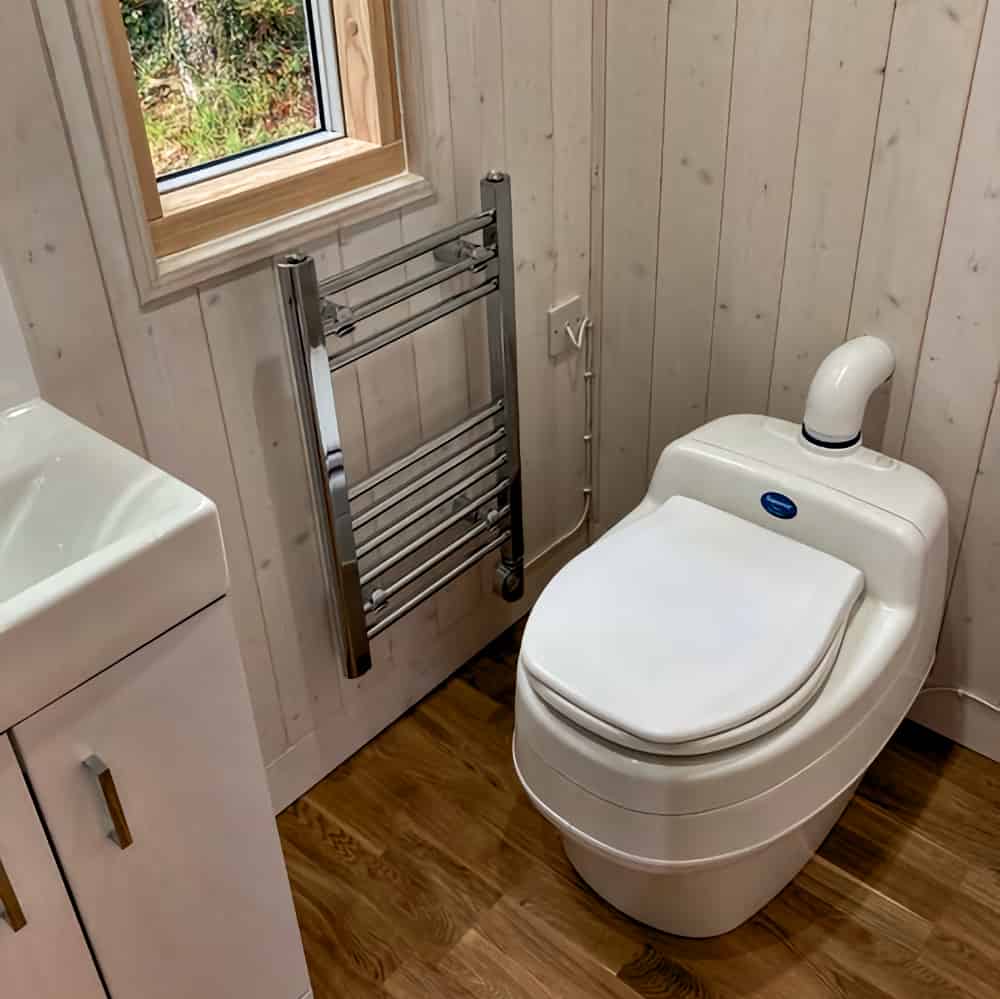
Separett Villa compost toilet installed in luxury cabin. Photo and cabin by Mark Waghorn Design.
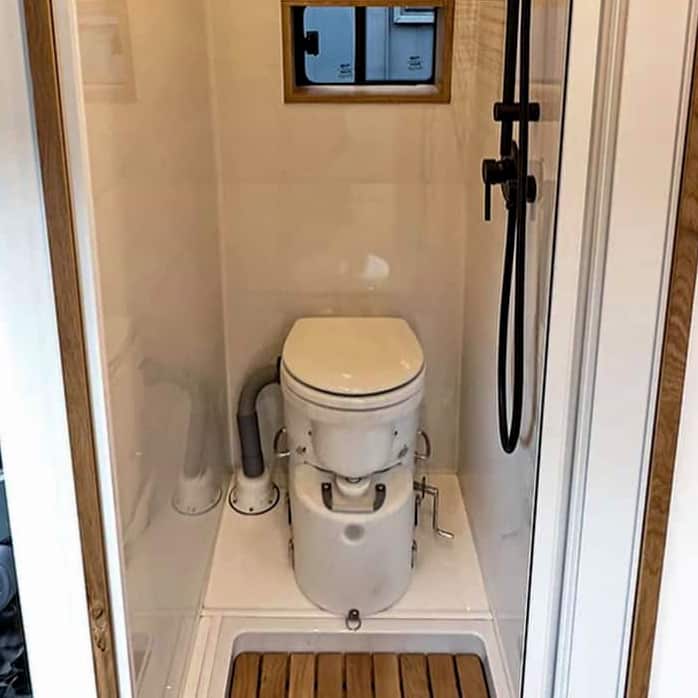
Air Head compost toilet installed in a campervan wetroom. Photo and installation by Adrift Conversions.
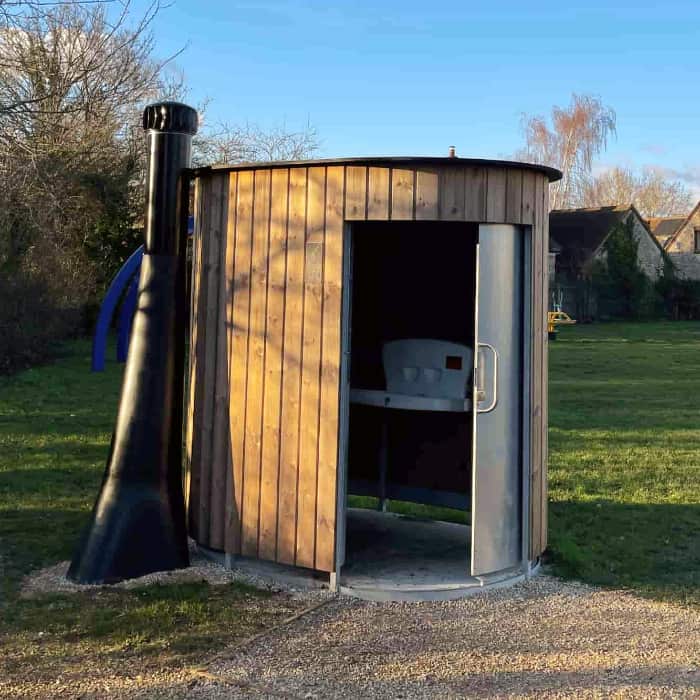
Kazuba KL2 accessible compost toilet, installed at Cumnor Parish Council.
Because they are not composting within the toilet itself, most of our compost toilets, don’t need anything added at the time of use (unlike some more traditional styles of compost toilets, which require sawdust or similar as a cover material), so they are incredibly simple at the point of use.
Composting toilet
A composting toilet, like the WooWoo GT or Alectura, takes in the raw materials (faeces, urine, toilet paper) and facilitates the whole composting process within the toilet container. This typically means the container is much larger than most compost toilets, which means the installation will need more thought and planning. The advantage of a composting toilet is that the operator or site owner is only handling compost as a final product i.e. there is no transfer of the contents (uncomposted manure) from the collection unit to a separate composting unit.
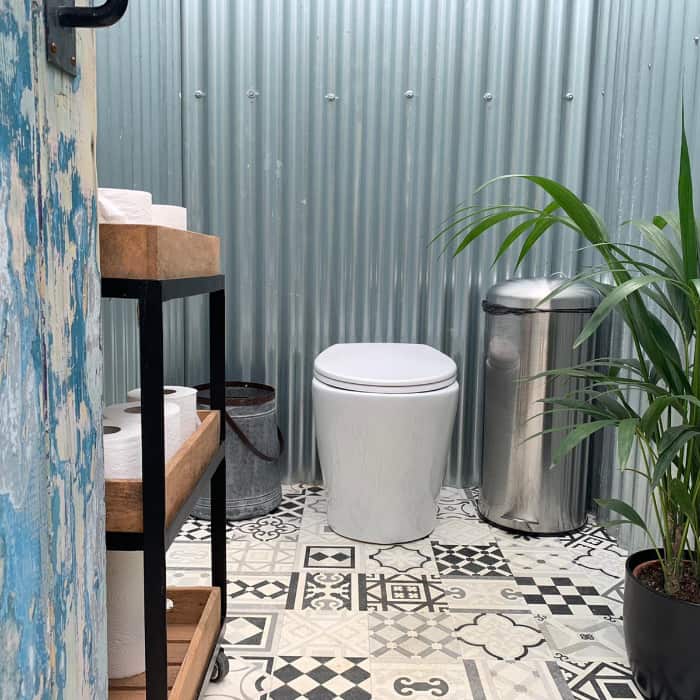
WooWoo GT LUX composting toilet. The LUX has a porcelain, non-separating pedestal. Image by Caelal camp site.
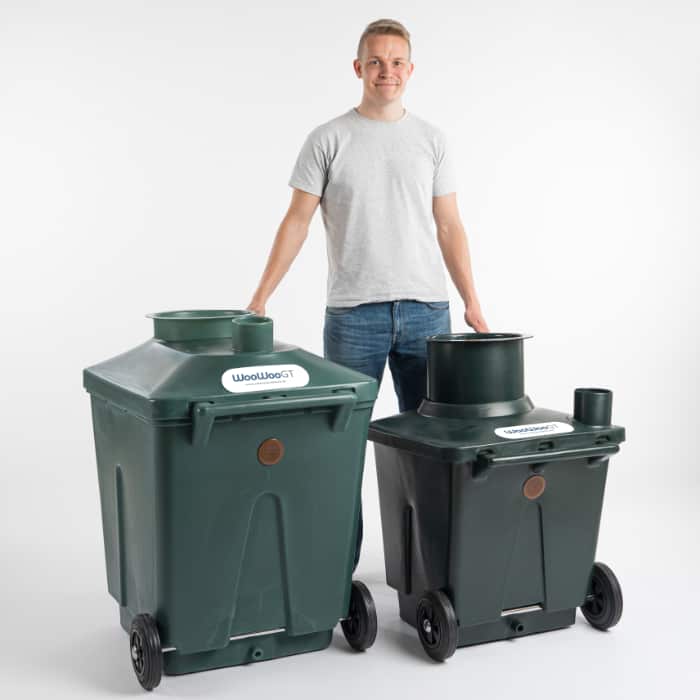
WooWoo GT 330 (left) and GT120 (right) composting toilets.
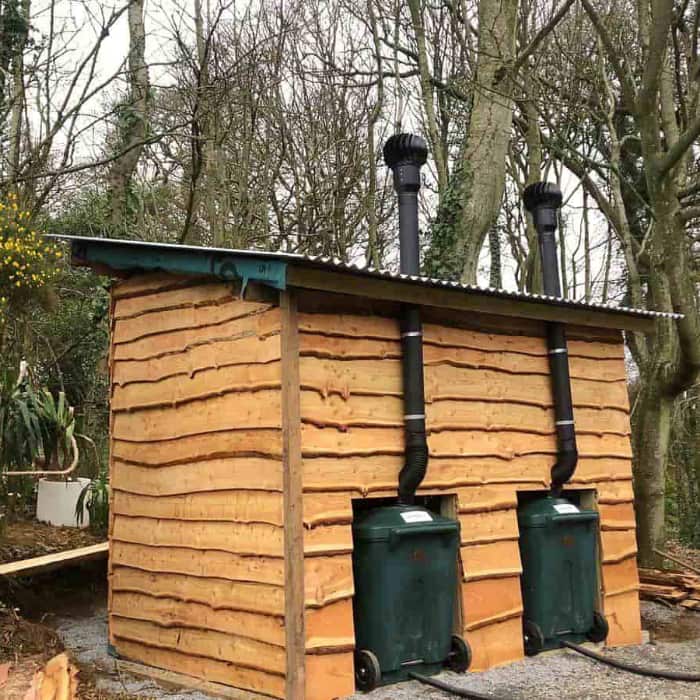
WooWoo GT 330 composting toilets installed in a custom cabin at Finnebrogue Woods.
To facilitate the composting process within a composting toilet, a source of carbon will need to be added. This is commonly in the form of fine wood shavings that can either be added by the user at the time of use, or by the owner/operator on a regular basis.
How do composting toilets work? Here’s a summary: Composting toilets work by breaking down organic waste (faeces, urine, and toilet paper) into compost through natural decomposition. Here’s a breakdown of the process:
- Collection of Waste:
- Waste is collected in a container within the toilet system.
- Composting Process:
- With the help of microorganisms (naturally occurring bacteria and fungi), heat, and a carbon source like wood shavings, the waste is transformed from manure into a safe compost.
- Odor Control:
- Ventilation systems remove excess moisture and odors while encouraging aerobic activity.
- Final Product:
- Once fully processed, the waste transforms into nutrient-rich compost that can be safely used in soil applications.
Compost toilets in our range include:
Composting toilets in our range include:
You can also read more about the composting process here.
What are urine-separating toilets? A comparison with non-separating options
- Urine-Separating Toilets – Urine-diverting systems separate liquids from solids to reduce odor and simplify waste handling.
- Non-Separating Toilets – Non-separating models collect waste together, suitable for high-traffic or public areas.
Urine separating or urine diverting is achieved through a special design of the toilet bowl (known as a urine separator or UDT – Urine Diverting Toilet). They work on the principle that when someone sits down on the toilet, urine will always go towards the front of the bowl, so it can be allowed to flow away and dealt with separately and uncontaminated from the faeces.
Having no cross-contamination means pure urine is generally sterile and can be run into the ground via a soakaway pit or a greywater drain for ease of disposal. Or, you might want to collect urine for use as a free fertiliser, diluted around 10:1 with water.
Urine equates to around 80% of the volume of ‘waste’ that the body excretes, which means that the solids (faeces) collection part of the toilet is only having to hold and store the remaining 20%, making it last longer between emptying and therefore generally easier to manage.
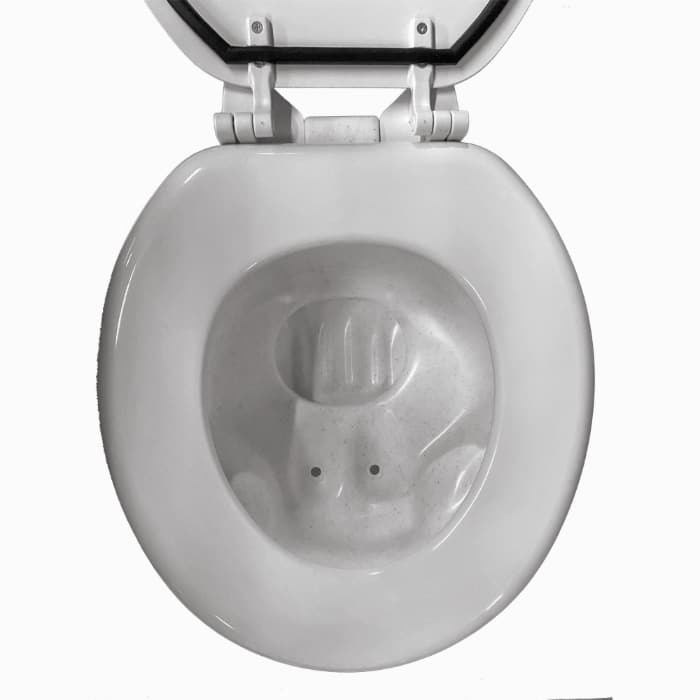
Air Head compost toilet showing the urine separating design.
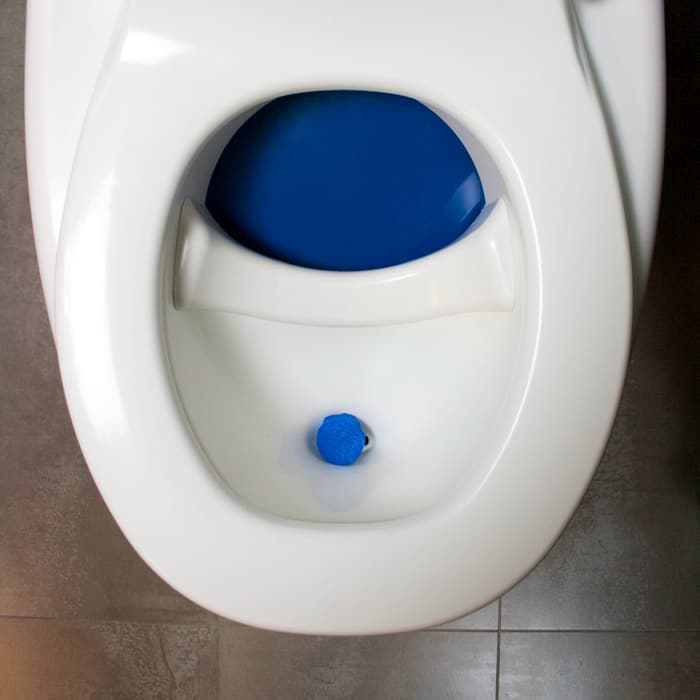
Separett Villa compost toilet. The blue concealing screen hides the solids container.
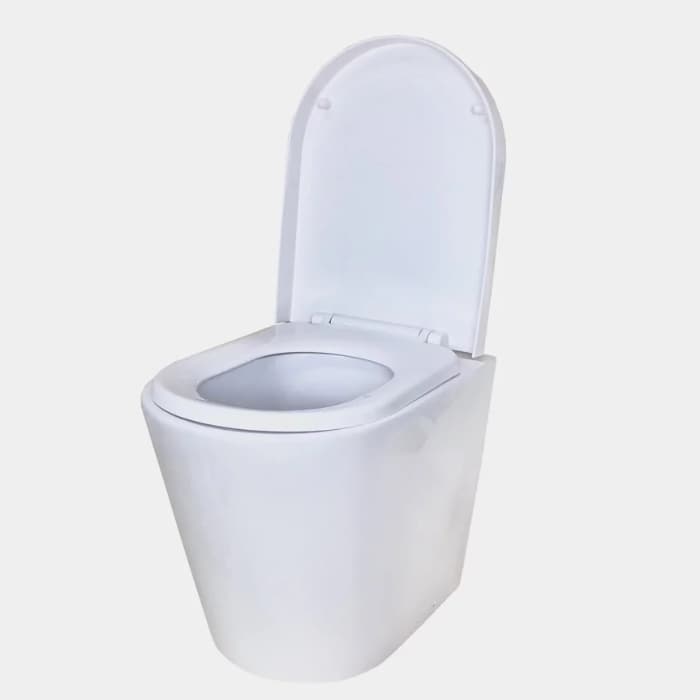
WooWoo GT LUX porcelain, non-separating pedestal.
The compromise with any separating toilet is that users should sit down to enable the correct separation of liquids and solids to occur. Whilst this is fine in domestic and low-use non-domestic settings, it can be open to accidental misuse, hence non-separating models are often preferred in high-use and public-facing installations.
Non-separating toilets make the user experience simpler as there is no requirement to sit down or be in a specific position. However, capturing liquids and solids together does mean the collection part of the toilet will have to be physically much larger than with a urine-separating toilet.
Separating toilets in our range include:
- Separett Privy 500 and Privy 501
- Separett Villa and Villa Extend
- Separett Tiny with Urine Container and Separett Tiny with Urine Extraction
- Air Head Standard and Air Head Compact
Non-separating toilets in our range include:
- WooWoo GT and WooWoo GT LUX
- Kazuba (all models)
- Alectura
How does odour control work in compost toilets?
A common concern with compost toilets is odour. Effective ventilation plays a key role in ensuring a pleasant, odour-free experience:
- Ventilation Systems: Low-power fans or wind vents remove excess moisture and foul smells.
- Carbon Cover Materials: Composting toilets often require a carbon source, like fine wood shavings, to neutralize odours and facilitate the composting process.
Odour control is best done through efficient ventilation, alongside other factors that all work together to ensure the user experience is pleasant and odour-free.
Some of our larger, higher capacity models (WooWoo GT and Kazuba) use wind-powered fans (and with the Kazuba, the additional benefit of the warming action of the sun on the chimney), to create an airflow that removes odours and excess moisture.
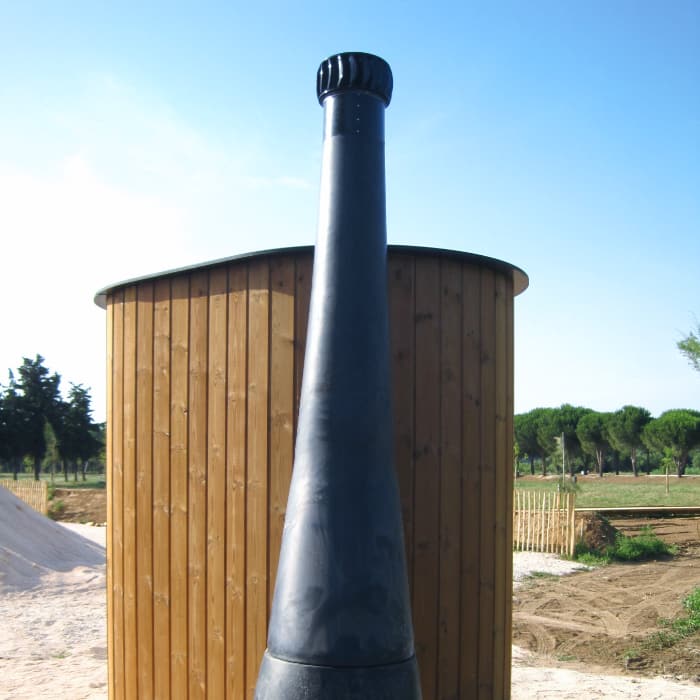
Kazuba KL2 features a black ‘chimney’ and a spinning wind vent for odour control and liquids evaporation
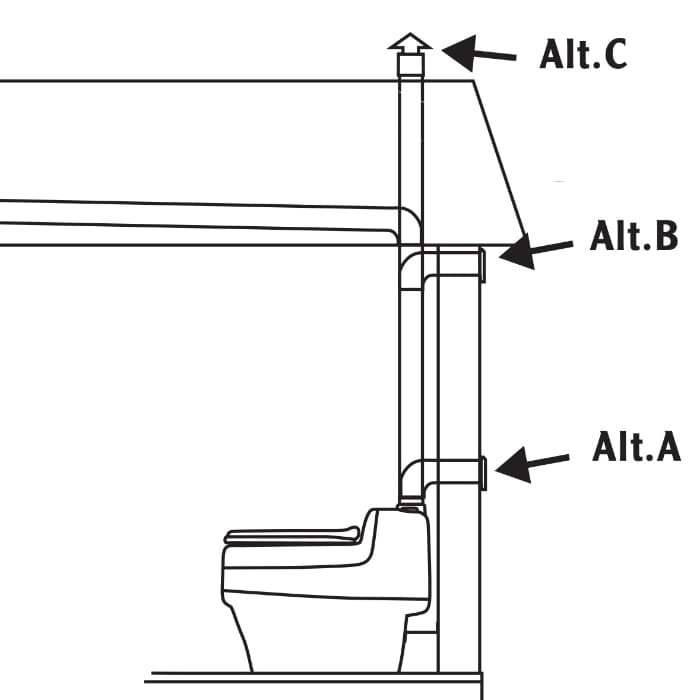
Ventilation options for a Separett Villa (Tiny is very similar).
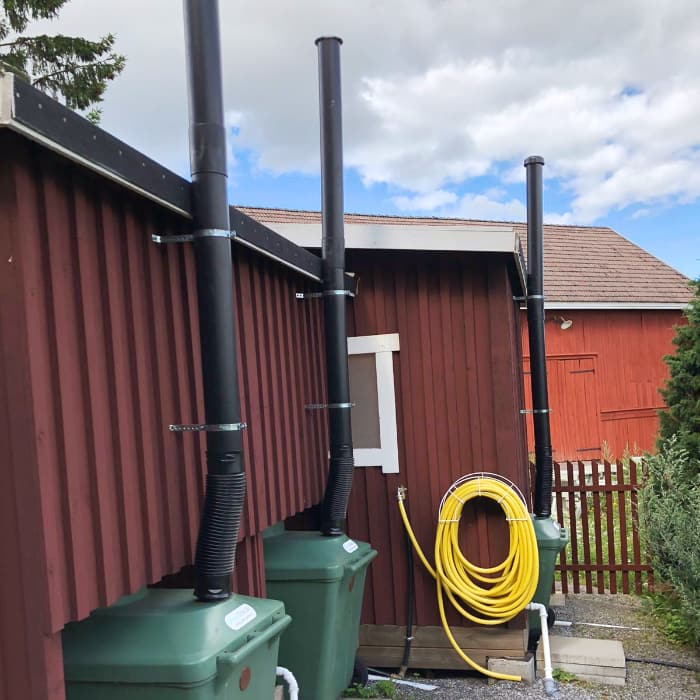
WooWoo GT uses 110mm pipe for ventilation and can be fitted with a spinning wind vent or an electric fan.
Smaller toilets, such as Separett and Air Head use low-power, low-voltage electric fans to pull or push air through the vent pipe to the outside, removing odours and excess moisture.
With the WooWoo GT, the action of naturally occurring, odour-eating compost bacteria is encouraged through the design and function of the toilet, together with the addition of a carbon-based cover material that will eliminate most of the foul odours naturally, with the balance removed through the ventilation system.
Remember – the ventilation system is not only removing odours, it’s also dealing with moisture too.
Why Choose a Compost Toilet?
Compost toilets are a versatile, practical and sustainable solution, ideal for off-grid living, low-water environments, and eco-conscious users. Waterless toilets offer flexibility for a variety of needs, whether for temporary setups or permanent installations. With features that prioritise functionality, such as odour control and simple waste handling, compost toilets deliver a hassle-free experience while adapting seamlessly to diverse lifestyles and settings.
Videos
Take a look at these animations for a good overview on how the systems work…
See how a Separett, urine-diverting toilet works.
Kazuba STK work by allowing liquids to drain through to an evaporation plate. Play the video for more details.
Need expert help choosing a compost toilet?
So that’s it – now you know the basics of how waterless toilets work!
If there’s anything you’re not sure about, why not call us? One of our friendly team will be happy to explain anything you need and offer our best advice for your situation.














